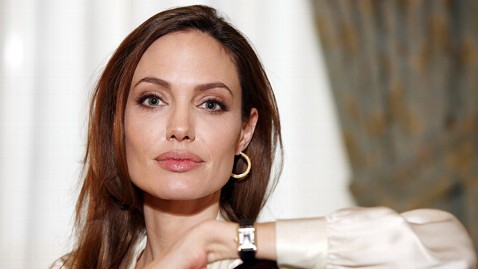Angelina Jolie's Mastectomy: What You Should Know
By going public with her prophylactic double mastectomy, actress Angelina Jolie has again shone the spotlight on breast cancer and the genetic mutation known to increase the risk of getting it by 60 percent.
(Jolie wrote that her doctor told her she had an increased risk of 87 percent, adding that the risk is different for each woman. An NIH study found this number to be too high.)
Although Jolie, 37, has the potential to save lives by raising awareness, facts about testing for the mutation and undergoing preventative care can be confusing. Here's what you need to know:
The test for the genetic mutation, called BRCA, is a simple blood test, but it's not for everyone. It's not always covered by insurance and can cost about $3,000, so you should know whether you're one of the 2 percent of women who have a family history that makes them more likely to have the BRCA mutation.
This is cancer.gov's list of family history to consider before undergoing BRCA testing:
- For women who are not of Ashkenazi Jewish descent:
- two first-degree relatives (mother, daughter or sister) diagnosed with breast cancer, one of whom was diagnosed at age 50 or younger;
- three or more first-degree or second-degree (grandmother or aunt) relatives diagnosed with breast cancer regardless of their age at diagnosis;
- a combination of first- and second-degree relatives diagnosed with breast cancer and ovarian cancer (one cancer type per person);
- a first-degree relative with cancer diagnosed in both breasts ( bilateral breast cancer);
- a combination of two or more first- or second-degree relatives diagnosed with ovarian cancer regardless of age at diagnosis;
- a first- or second-degree relative diagnosed with both breast and ovarian cancer regardless of age at diagnosis; and
- breast cancer diagnosed in a male relative.
- For women of Ashkenazi Jewish descent:
- any first-degree relative diagnosed with breast or ovarian cancer; and
- two second-degree relatives on the same side of the family diagnosed with breast or ovarian cancer.
In all, between 0.125 and 0.25 percent of women will test positive for the BRCA mutation, and it varies by ethnicity. These women have an increased risk of getting breast cancer and ovarian cancer.
If you do test positive for BRCA, you have options, and you don't necessarily have to go the Jolie route.
Some women choose not to have surgery. Instead, they increase cancer surveillance with imaging tests. These include regular mammograms to test for breast cancer, and regular pelvic sonograms and blood-tests to watch for ovarian cancer.
It is important to note that surveillance or screening does not reduce risk, but rather potentially improves early detection of cancer should it occur.
Other options include chemo-prevention, or taking certain medications to reduce cancer risk. For example, some women take a drug called tamoxifen to prevent breast cancer and others take birth-control pills to prevent ovarian cancer. These decisions are individual, highly personal and often times very difficult ones for a woman and her family to make.
Like Jolie, some women choose surgery when they learn they have the BRCA mutation. The decision to surgically remove the breasts and ovaries is an individual one and must take into account the woman's age, fertility and reproductive wishes, psychological factors and cost. Her general medical condition for undergoing elective surgery should be taken into consideration, too.
Often, the reconstructive process is done in stages for a few months and can cost as much as $50,000. Fortunately, since 1998, women without medical insurance have increased options and mandatory coverage for undergoing breast reconstruction after mastectomy.
Because these decisions are complex, patients can seek consultations with oncologists, general gynecologists, gynecologic oncologists, breast surgeons and reconstructive plastic surgeons.
While studies have shown a significant risk reduction and likely survival benefit in women with a BRCA mutation who undergo preventive surgery, their risk does not drop to zero. There is still a low chance of developing breast cancer in the chest wall, and ovarian cancer in the pelvic cavity.
Men carry the BRCA mutation, too, so if a woman with a mutation has a son, he has a 50 percent chance of being a carrier and having the mutation. Men with the mutation face increased risks of breast cancer, certain kinds of pancreatic cancer, testicular cancer and prostate cancer.
While the information presented here represents the medical tip of the iceberg, the hope is that it can begin the process of informing, educating and empowering both women and men about this kind of genetic mutation and cancer risk.

Angelina Jolie revealed she had genetic testing and a double mastectomy. (Credit: Carlo Allegri/AP Photo)